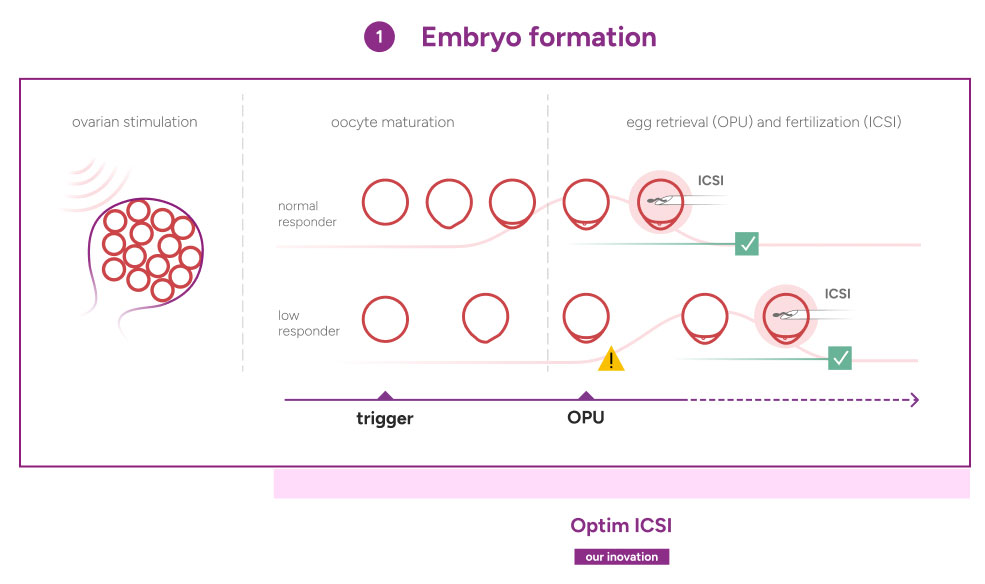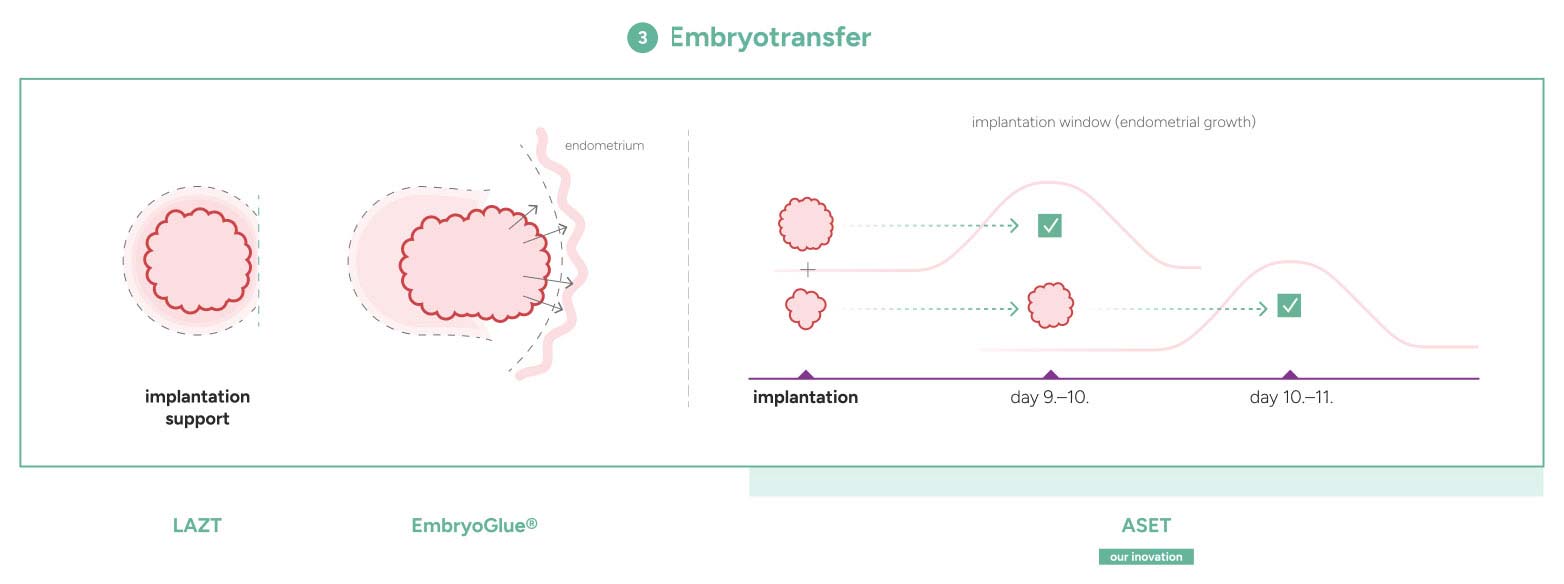We never stop searching for ways that help us with your treatment. We improve the methods that Dr Hlinka has created and introduced into embryology during his almost 40-year medical career. At CLAYO CLINIC, we now offer these methods enhanced through continuous development.




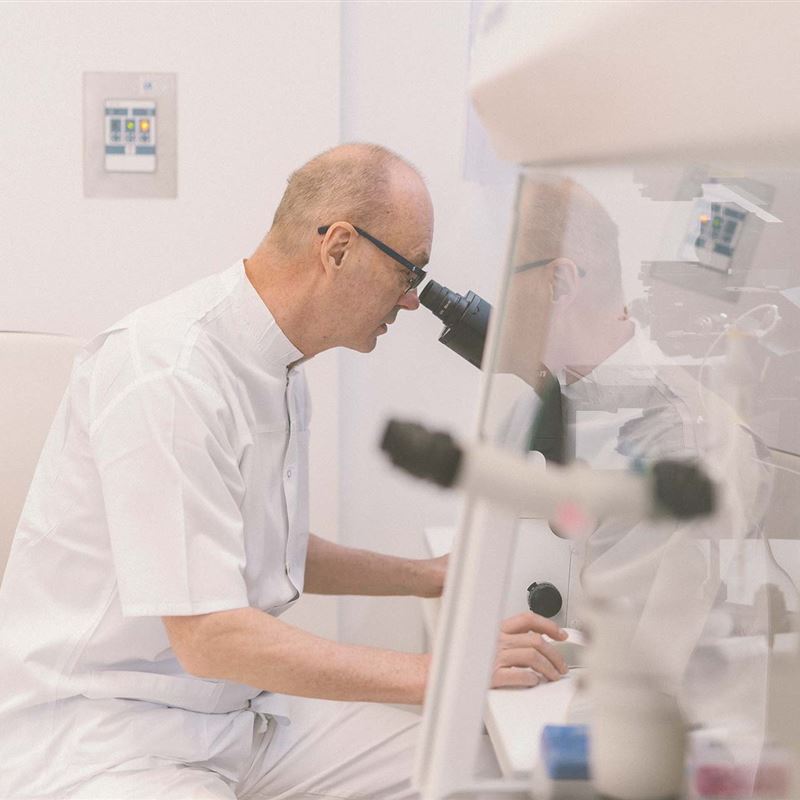
Clayo Clinic is the most innovative IVF Clinic in the Czech Republic
Embryo creation
For successful pregnancy, optimally matured eggs and vital sperm are crucial. The unique Optim ICSI, treatment method developed by Dr Hlinka, helps precisely determine the optimal stage of egg maturation, thereby maximising the number of quality embryos suitable for transfer.
-
ICSI
Intracytoplasmic sperm injection (into the oocyte)
A type of fertilisation where the embryologist directly injects a selected sperm into the egg.
-
Optim ICSI
our innovationA unique treatment method developed by Dr Daniel Hlinka, based on monitoring retrieved eggs (oocytes) in a laboratory setting. This is a non-invasive method, utilising polarisation microscopy, which recognises the maturity of the eggs and determines the optimal stage of ICSI fertilisation (intracytoplasmic sperm injection), thereby maximising the number of high-quality embryos suitable for transfer. The method is proposed mainly for poor/delayed responders.
-
Sperm retrieval and selection
MESA / TESE, LAISS, MACS, Microchip, Swim-out
MESA / TESE
Microsurgical Epididymal Sperm Aspiration / Testicular Sperm Extraction
Microsurgical retrieval of sperm. It is used in patients with obstructive azoospermia.
LAISS
Laser-Assisted Immotile Sperm Selection
The viability of sperm is a fundamental requirement for successful ICSI treatment. The LAISS method utilises a laser pulse directed at the tail of the sperm. If the tail starts to bend, the sperm is considered viable and suitable for fertilisation. It is a safe method recommended in MESA / TESE IVF cycles as well as in other cases of immotile sperm.
MACS
Magnetic-Activated Cell Sorting
The MACS method uses a magnetic field to select sperm with damaged genetic material. Healthy sperm are separated for further use, such as in ICSI fertilisation or freezing.
Microchip
Natural selection of sperm using a chip without the use of chemicals.
Swim-out
Method of sperm selection in cases of severe OTA syndrome (oligo-astheno-terato zoospermia), i.e. the presence of a very small number of almost immobile sperm.
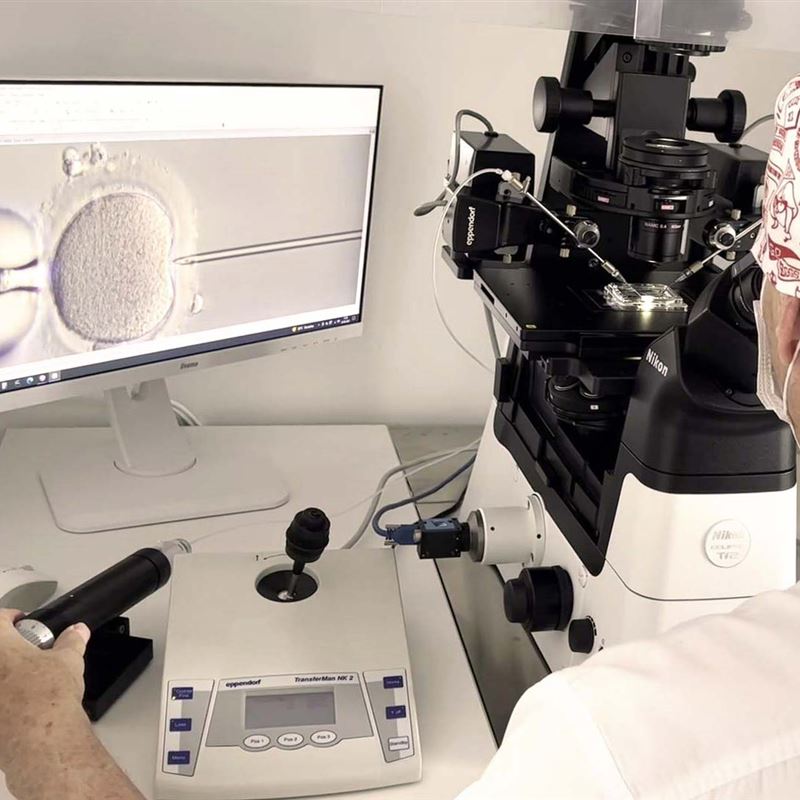
Embryo development and evaluation
In 2010, Dr Hlinka was one of the first in the world to introduce continuous monitoring of embryo development- the Time-lapse System (TLS ). This allows non-disturbed embryo culture and records key markers of embryo development which allows an objective embryo scoring.
-
Time-lapse system
our innovationContinuous monitoring and evaluation of embryo vitality
At Clayo Clinic the whole TLS is powered by artificial intelligence CATI (artificial intelligence developed by dr. Hlinka) which standardises an embryo scoring and predicts non-invasively the chromosomal status of embryos. It is a non-invasive alternative for couples where invasive biopsy of embryos fro PGT-A is not acceptable.
Moreover, TLS brought a full transparency into the IVF treatment so that the couples can understand and/or accept the proposed outcomes (e.g. D3 or D5 transfer, to do or not to do PGT etc.).
-
Extended embryo cultivation
The standard, uninterrupted period of embryo cultivation from fertilisation to transfer is 3 days. Extended cultivation to the blastocyst stage (blastocyst transfer) takes 5-6 days and, in combination with Time-lapse System and PGT examination, represents the most comprehensive system for embryo evaluation. (Note: blastocyst transfer is not suitable for all patients, especially not for "low responders" with a low number of retrieved eggs.)
-
Preimplantation Genetic Testing (PGT)
A method used in the IVF process to genetically test embryos for their health. Embryos can be screened for a certain number or all chromosomes to check for any missing or extra ones. For example, Down syndrome can be ruled out. Furthermore, embryos can be tested for diseases that occur in the family and pose a realistic risk of inheritance to offspring.
-
Vitrification
our innovationA method of rapid freezing used for cryopreservation of embryos and oocytes. This method is more expensive than the previously used slow freezing, but it ensures better survival of embryos or oocytes after thawing. Theoretically, embryos/oocytes can be cryopreserved in liquid nitrogen for an infinite period of time.
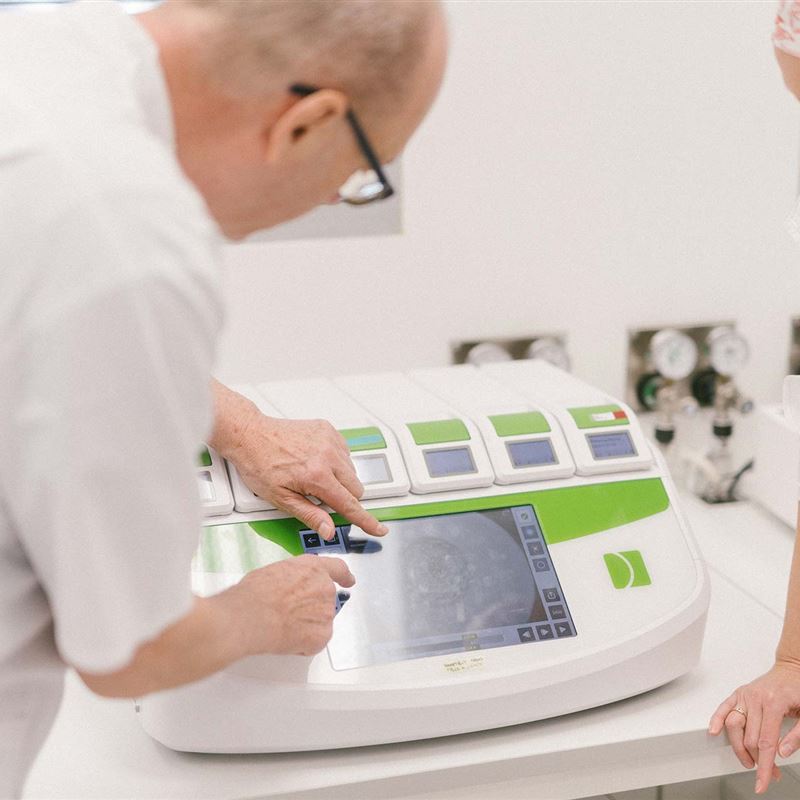
Embryo transfer and implantation
We do everything to make your treatment successful at the first attempt. However, sometimes embryo transfer fails or repeatedly fails. In these cases, we employ the ASET methodology to maximise the chances of successful embryo implantation.
-
LAZT (assisted hatching)
Laser-assisted zona thinning
The embryo is surrounded by a protective shell called the zona pellucida. When it starts to implant, this layer becomes thinner and eventually ruptures to allow the embryo to exit the shell and implant. By performing laser thinning of this shell, we ensure that the embryo expends less energy and can easily exit the shell and implant.
-
EmbryoGlue® / UTM Sage
Media used during transfer to enhance better communication between the embryo and the uterine lining and facilitate embryo implantation after transfer. They have been proven to increase the success of embryo implantation.
-
ASET (Asynchronous embryo transfer)
our innovationIn the cases, when there is repeated implantation failure after transferring of high-quality embryos, we recommend the transfer of embryos at different stages of development (D3, D5). It can cover a wider implantation window of uterine receptivity and increases the chances of successful embryo implantation. This approach is a non-invasive alternative to ERA test.

Take a look at a simple description of the treatment process.
Revolutionary CATI: completing a non-invasive tool in infertility treatment
We are developing an artificial intelligence system called CATI, which reliably calculates your chances of conception and can predict the ideal treatment approach. CATI combines Dr Hlinka's knowledge and experience with the processing and analysis of a vast amount of data from the continuous monitoring of embryos and the results of PGT.
The system is currently in the testing and certification phase. However, we already utilise non-diagnostic modules. After complete certification, CATI will be integrated into the standard treatment process, maximising its potential.
Follow us

Want to know more?We are here for you.







